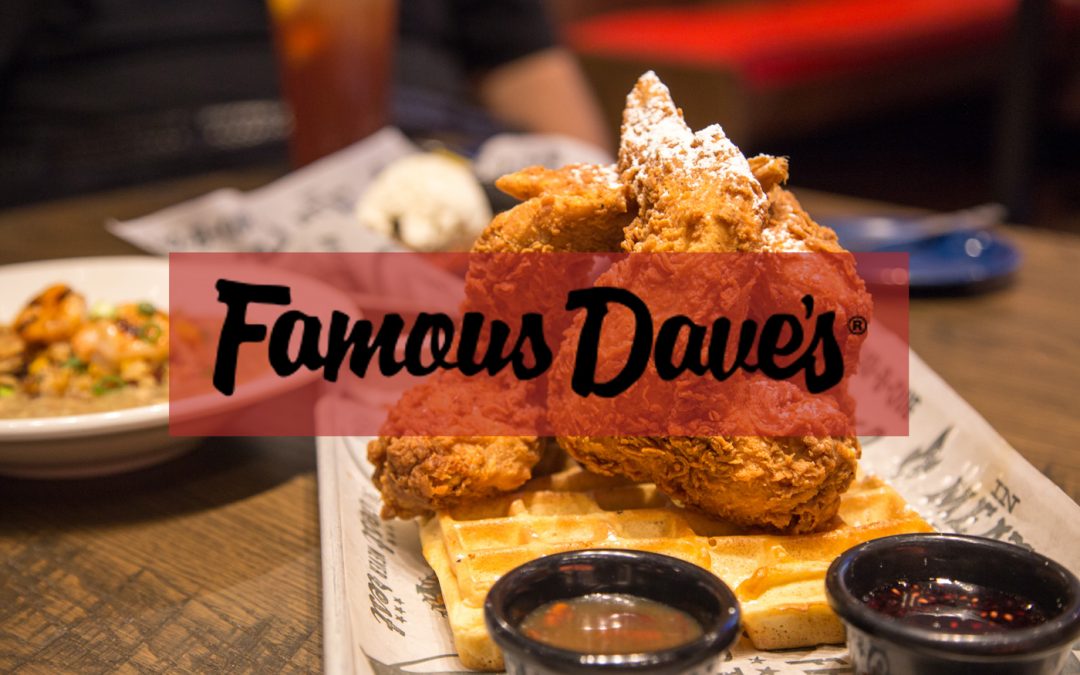The casual dining segment of the restaurant industry in which Famous Dave’s plays continues to struggle. But Famous Dave’s is shifting efforts toward delivery both inside shared kitchens and with a small-format restaurant design.
The company has continued a slow slog back to profitability, but much of its sales growth has come from off-premise dining.
Sale of food consumed outside of the restaurant currently accounts for 45% of its sales (35% to go, 10% catering). That means a big opportunity to make that large part of the business a little more efficient with some novel ideas.
First, a California franchisee will soon be in shared kitchens, including a Kitchen United facility in Pasadena.
“Some of our highest volumes are in California, we think it’s an area that has the appropriate density and income—all the things you should look at with something like this,” said Famous Dave’s COO Geovannie Concepcion.
Atul Sood, the chief business officer at Kitchen United, said once Famous Dave’s is in the facility, it will be a good test for national brands trying to understand how to take advantage of the new industry, especially in busy Southern California markets.
“At peak time their lobbies start getting backed up by delivery drivers. So they want to offload some of that traffic into a commissary environment so they don’t disturb regular customers,” said Sood. “That’s something we’re hearing a lot now. There are some national brands that actually turn off delivery during peak times because the kitchen can’t handle it. That’s literally turning away money.”
Concepcion said the plan is to have the shared kitchen facility open soon. But in markets without shared kitchens (and that’s most markets at this point), he’s looking to recreate some of those same efficiencies with barbecue pods.
“The idea being that we can create these pods that have full-functioning kitchens and they can plug into a water line and electric, we have a lot of flexibility where we can put these,” said Concepcion.
He said it just makes sense when looking at not only the big macro trend of delivery and convenience growth, but also all the other pain point in the restaurant industry.
“I think there’s three macro trends that are driving restaurants to consider those especially for us, rising labor costs across the U.S., we have real estate and lease terms at or near all-time highs and construction costs have gone up significantly in many markets, too. When you look at those factors and then the consumer side, the consumer wants conveniences, great products with great convenience,” said Concepcion.
The pods, which look a little like wide shipping crates in renderings, would change how Famous Dave’s approaches real estate drastically. The typical Famous Dave’s sits on a corner, it needs good visibility and ample parking. For the urban markets where delivery is growing fast, those sites are either prohibitively expensive or simply don’t exist.
Instead, the pods can be built in a facility, driven out to a good location and plugged in. So instead of the $450,000 for just the traditional Famous Dave’s kitchen and $1.4 million to $1.8 million for the whole restaurant, the pods are projected to cost $300,000 to $600,000.
It also makes the permitting process much easier for the urban locations that are still available. Instead of gutting an old building and doing an expensive retrofit to get up to code, a pod could fit right inside an old building.
And since visibility matters a lot less, the A and B locations are very different.
“One of the most important things now are drive times, that has a lot to do with it. In our case we’ll be looking to leverage third-party providers, a lot of their radius or the bounds they’ll set are going to be determined by drive times, so it’s just natural to look maybe not for great curb appeal but great drive times,” said Concepcion.
As for the menu for the smaller pod kitchens, it will be stripped down to classic menu items that Concepcion is calling “a return to ‘que” and could be sold like a barbecue market price with meat by the pound and a la carte sides.
He expects the first pod location to open up in the first quarter of next year.


